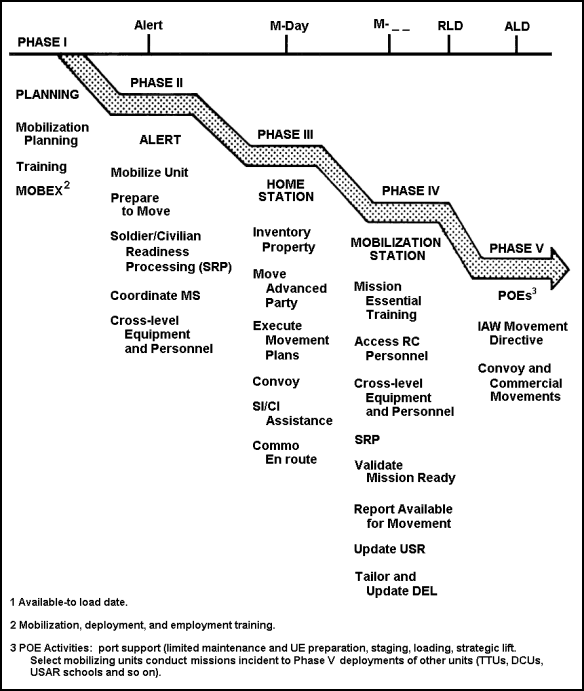Army Deployment Process Explained

Introduction to Army Deployment

The army deployment process is a complex and highly coordinated series of events that ensures military units are prepared and equipped to carry out their missions effectively. Deployment refers to the movement of military personnel, equipment, and supplies from their home station to a destination outside the continental United States (OCONUS) or within the continental United States (CONUS) in support of military operations. This process involves careful planning, preparation, and execution to guarantee the success and safety of the deployed troops. Understanding the army deployment process is crucial for military personnel, their families, and the general public to appreciate the intricacies and challenges associated with military deployments.
Pre-Deployment Phase

The pre-deployment phase is the initial stage of the army deployment process. During this phase, several critical steps are undertaken: - Alert and Notification: The unit receives an alert or notification of an impending deployment. This is usually followed by a warning order that outlines the mission, destination, and timelines. - Pre-Deployment Training: Units undergo specialized training to prepare them for the specific mission and environment they will be deploying into. This training can include language training, cultural awareness, first aid, and combat skills enhancement. - Equipment Preparation: Military equipment, including vehicles, weapons, and communication devices, is inspected, maintained, and prepared for shipment. - Medical and Dental Screening: Personnel undergo medical and dental screenings to ensure they are fit for deployment. This includes updating vaccinations, dental care, and addressing any health issues that could impact deployment readiness.
Deployment Phase

The deployment phase involves the actual movement of troops and equipment from their home station to the deployment location. Key aspects of this phase include: - Movement Planning: Detailed planning of the movement, including transportation modes (air, sea, land), routes, and security measures. - Embarkation: The process of loading personnel, equipment, and supplies onto aircraft, ships, or vehicles for transport to the deployment location. - Travel and Transit: Personnel and equipment are transported to the deployment location. This can involve multiple modes of transport and may include stops at intermediate locations for refueling, rest, or further embarkation. - Debarkation: The process of unloading personnel, equipment, and supplies upon arrival at the deployment location.
Post-Deployment Phase

After the deployment, units enter the post-deployment phase, which focuses on reintegration and recovery: - Reintegration: Personnel return to their home station and undergo a reintegration process, which includes debriefing, medical screening, and counseling to help them readjust to life after deployment. - Equipment Recovery: Deployed equipment is recovered, inspected, and maintained to ensure it remains serviceable for future operations. - Lessons Learned: The deployment is reviewed to identify lessons learned, which are used to improve future deployment processes and operational effectiveness.
Challenges and Considerations

The army deployment process is fraught with challenges and considerations, including: - Logistical Challenges: Moving large quantities of personnel and equipment over long distances poses significant logistical challenges, including transportation, accommodation, and supply chain management. - Security Risks: Deployments often involve operating in hostile or uncertain environments, posing security risks to personnel and equipment. - Family Support: The deployment of military personnel can have a significant impact on their families, who must cope with the absence of a loved one and the associated stresses and uncertainties.
📝 Note: Effective communication and support systems are crucial for mitigating the challenges faced by military families during deployments.
Technological Advancements and Future Deployments

Technological advancements are continually changing the landscape of military deployments. Innovations in areas such as: - Communication Technology: Enhancements in communication technology improve real-time communication between deployed units and command centers, enhancing operational effectiveness and safety. - Transportation Technology: Advances in transportation technology, such as more efficient aircraft and ships, can reduce transit times and increase the speed of deployment. - Cybersecurity: As military operations become increasingly dependent on cyber systems, cybersecurity plays a critical role in protecting military networks and systems from cyber threats during deployments.
| Phase | Description |
|---|---|
| Pre-Deployment | Planning, training, and preparation for deployment. |
| Deployment | Movement of personnel and equipment to the deployment location. |
| Post-Deployment | Reintegration, equipment recovery, and lessons learned upon return. |

As the nature of military operations evolves, so too will the army deployment process. It is essential for military forces to adapt and innovate to meet the challenges of future deployments effectively. By understanding the complexities and challenges of the deployment process, military personnel, policymakers, and the public can better appreciate the sacrifices and efforts of those who serve.
In reflection, the army deployment process is a multifaceted and dynamic system that requires meticulous planning, execution, and support. The success of military operations depends significantly on the effectiveness of this process. As military strategies and technologies continue to evolve, the deployment process will also undergo changes, aiming to enhance operational efficiency, safety, and the well-being of military personnel and their families.



